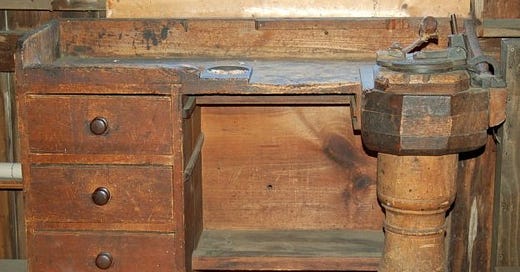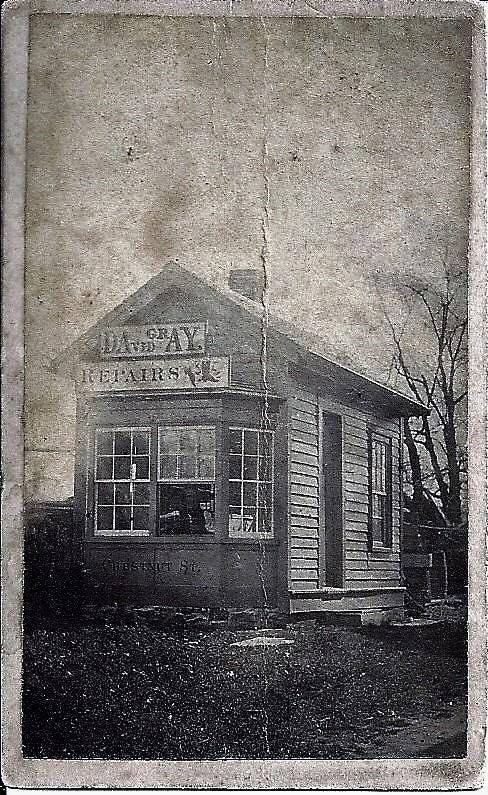This might seem to be an easy What’s It Wednesdays question, but there’s always more to the story…
ACHC #1932.018.1ab
These are not shoe trees, used to retain the shape of one’s fine leather shoes. They are shoe lasts used by a shoemaker (also known as a cordwainer.) Early on, lasts were straight with no differentiation of left and right. Later, curved lasts were used and came in pairs, right and left shoe, like these pictured.
Shoemakers/cordwainers were the skilled craftsmen making shoes out of brand-new leather. Cobblers were the ones who repaired shoes. Initially, cobblers were forbidden to make repairs with new leather. They could only use old.
The difference between the two trades was once such that calling a shoemaker a cobbler was a great insult. And “to cobble” is still used today to mean to patch something together roughly or quickly, without great care.
A shoemaker was a skilled craftsman who would measure a customer’s foot and cut a leather shape based on the measurements to make an insole. The insole was then wrapped on a last for finishing.
Next, a leather upper was attached to the insole, hand-sewn or with tacks or wooden pegs. Then, a sole of multiple leather layers was hammered into shape and a heel was attached. The process included using specific tools to rasp, scrap, and smooth the soles and heels. The shoe was then removed from the last and any tacks or pegs that may have pierced the inside, were removed.
All this required many tools and, of course, a workspace.
ACHC #1932.009.1
This lovely bench, complete with tools, is in our collection. It is a standing shoemaker’s bench, for a left-handed shoemaker. The column on the right is where a last would be attached. The drawers of tools are on the left, in easy reach for a left-handed person. This bench was once used by Isaac Barnard, in Frye Village.
Shoemakers and cobblers were forced to merge their trade in the 1800’s when shoemaking was industrialized. At that time, shoemaking became part of a cottage industry in Essex County. The shops were referred to as “ten-footers.” They were small home shops in people’s yards. Residents and neighbors would do piece work to earn extra money.
ACHC #1992.1444.1, 7 Chestnut Street
Here’s David Gray’s “ten-footer” shop that was once located at 7 Chestnut St. If you look closely, you’ll see him in the window, with hammer in hand.
"Cobbler, cobbler, mend my shoe.
Get it done by half past two.
Half past two is much too late.
Get it done by half past eight.
Stitch it up and stitch it down.
And I’ll give you half a crown."
Do you have a story to share?







